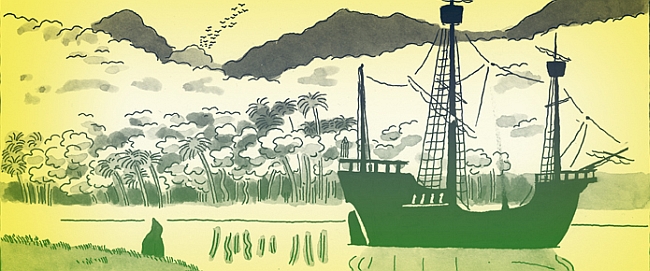 Over a Safari Festival weekend in which desirable comics treasures were in abundant supply, and attendees could be forgiven for lapsing into sequential art sensory overload, there were nonetheless a handful of projects that boldly stood out as true highlights at the event. One of these was Antoine Cossé’s Mutiny Bay, one of two longer-form books – the other being Gardens of Glass, a collection of Lando’s work from Decadence Comics – debuting from festival organiser and rising UK micropublisher Breakdown Press.
Over a Safari Festival weekend in which desirable comics treasures were in abundant supply, and attendees could be forgiven for lapsing into sequential art sensory overload, there were nonetheless a handful of projects that boldly stood out as true highlights at the event. One of these was Antoine Cossé’s Mutiny Bay, one of two longer-form books – the other being Gardens of Glass, a collection of Lando’s work from Decadence Comics – debuting from festival organiser and rising UK micropublisher Breakdown Press.
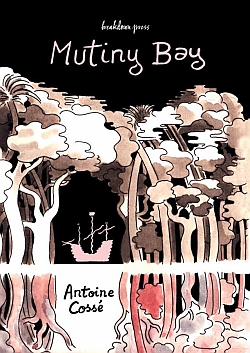 A historical drama with profound psychological undercurrents, Mutiny Bay is set around Easter 1520 as Portuguese explorer Ferdinand Magellan’s Spanish backed expedition to discover a South American route to the Spice Islands has come to a standstill in readiness for the winter. Having dropped anchor in the Patagonian bay that Magellan himself named Puerto San Julian, the five ships that make up the fleet prepare to wait out the months of inclement weather. But discontent at the admiral’s failure to make tangible progress and anger at poor living conditions has been building. The mutinous intent that has split the seafarers along a nationalist Spanish-Portuguese divide will lead to a carefully orchestrated attempt to seize control of the vessels – one with serious consequences for all involved…
A historical drama with profound psychological undercurrents, Mutiny Bay is set around Easter 1520 as Portuguese explorer Ferdinand Magellan’s Spanish backed expedition to discover a South American route to the Spice Islands has come to a standstill in readiness for the winter. Having dropped anchor in the Patagonian bay that Magellan himself named Puerto San Julian, the five ships that make up the fleet prepare to wait out the months of inclement weather. But discontent at the admiral’s failure to make tangible progress and anger at poor living conditions has been building. The mutinous intent that has split the seafarers along a nationalist Spanish-Portuguese divide will lead to a carefully orchestrated attempt to seize control of the vessels – one with serious consequences for all involved…
Part period set piece and part unsettling character analysis, Cossé fleshes out the bare bones of historical fact in Mutiny Bay, creating a lingering narrative that, through its focus on a mere handful of the players involved, is replete with reflections on human frailties and characters consumed by their own failures. Magellan, a hard and unrelenting figurehead to those around him, is also a man terrified at the prospect that his life’s mission will fall apart, by his feelings of inadequacy and by his suppressed sense of inferiority; the latter beautifully portrayed in a dreamlike flashback sequence to a previous audience with King Charles I of Spain. It’s this intense, explicit and yet often still rather subtle analysis of the movers and shakers in this nautical uprising that elevates Mutiny Bay from a well choreographed re-creation of a centuries old conflict into something far more nuanced and layered.
For a book largely taking place on a vast and open expanse of water there’s something oddly claustrophobic to Mutiny Bay; both before the pivotal events, as friction is generated between the ranks, and after it as the two surviving conspirators – a treacherous monk and the last of the rebellious captains, Juan de Cartagena, who also happens to be the king’s cousin – are marooned on an island on the bay and left to their fate. It’s in this final section of the book that Cossé’s previously largely black and white pages (with the exception of the flashback sequences) suddenly erupt into a panoply of delirious colour, signifying a descent into delusion and madness (below right). It’s an interesting contrast to the study of some of the characters earlier in the book as forms of incarceration – whether literally in the case of the abandoned traitors or the captured sailors during the mutiny, or metaphorically as regards those like Magellan, or the sailor Carraõ, who are prisoners of their own fears and past indiscretions – are a frequent theme throughout.
Cossé’s command of the page and intuitive ability to manipulate the standards of the form is breathtakingly effective in places. The ongoing presence of circular motifs in his layouts, for example, is used in a variety of ways to advance the book’s underlying ideas. Sometimes it highlights perspective and a positional sense of inter-related events, with a circular spotlight on the actions of one character, or scenario, stressing its impact on the larger picture. At other points – notably in the scenes dealing with the aftermath of the mutiny – the elliptical juxtaposition of the brutality of the repercussions of the revolt on the desolate wilderness of the landscape (example above left) accentuates an impression of unforgiving remoteness on more than one level. But ultimately it’s Cossé’s more lyrical application of this technique that will stay with the audience the longest, particularly the way in which he utilises circular elements to examine the remorse of the taciturn Carraõ who is tormented by his role in the tragic fate of a local girl in Rio earlier in the voyage. It’s a truly outstanding employment of visual metaphor to convey emotional state and evoke a cyclical notion of poetic justice.
An eerie character study wherein historical reality melts into an illusory otherworldliness, Antoine Cossé’s Mutiny Bay takes a cast who are all lost on some level – whether they’re lost in guilt, in purpose, in their dreams of the past, or in a more literal, forsaken sense – to create one of the most stirring, haunting and disquieting period comics you are ever likely to engage with. Breakdown Press have been steadily developing a deserved reputation over the last few months for publishing comics with a distinctive vision and philosophy. With Mutiny Bay they may just have come of age…
For more on Antoine Cossé visit his tumblr here. Mutiny Bay is published by Breakdown Press priced £14.99 and is available from their online store here.
For regular updates on all things small press follow Andy Oliver on Twitter here.





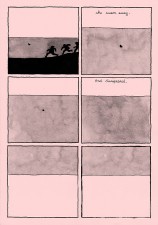
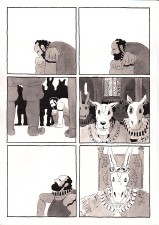
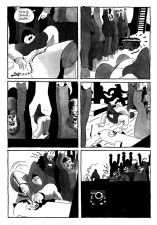
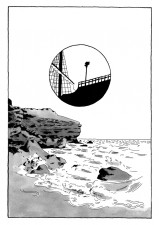

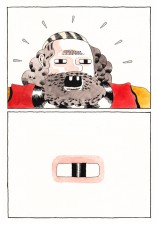

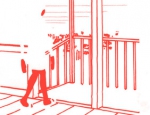
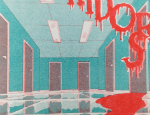







I really enjoyed it, Kat. Long overdue that I gave Breakdown some more substantial coverage as well!
Oooh this sounds good!!!